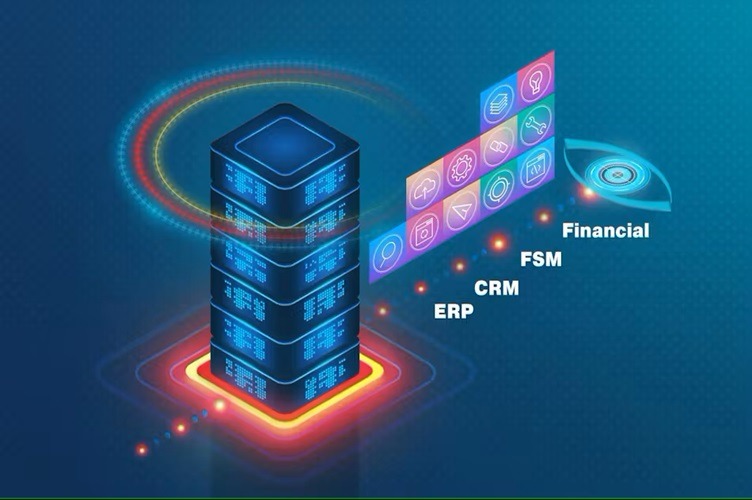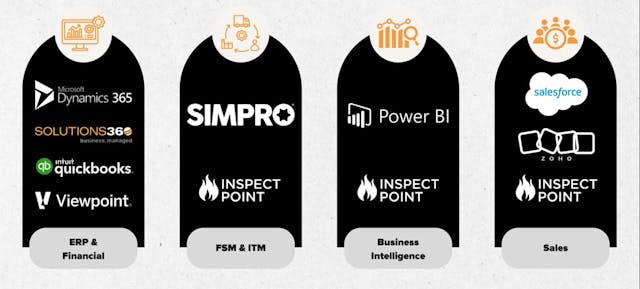
9.13.24 – SIW – An integrated tech stack is vital to the business management and eventual acquisition process.
There’s been a boom in merger and acquisition (M&A) activity in the fire and security world over the last decade. Fire protection and security as an industry has proven to be largely recession-proof and pandemic-resistant. At the onset of the pandemic, fire protection was quickly deemed essential work, and recurring inspections continued, business as usual.
Investors took note, and the industry became increasingly attractive. Why?
To begin with, fire and security businesses – depending on the services they provide – are often built on a recurring service model. Inspections take place at various frequencies, ranging from weekly to a five-year cycle. Additionally, fire protection is a “codified” industry, meaning the business is based on regulations at the local, state, and federal levels. Businesses must conduct inspections and manage deficiencies to remain in compliance and ensure their systems are working properly. Thus, there’s always demand for fire protection services because fire protection is mandated by law.
Investors have noticed this combination is a winning one, and it has resulted in a flurry of deals in the past two years – from multi-billion-dollar deals for Chubb Fire & Security, to private equity-backed roll-ups of mid-sized fire and security companies, to small business acquisitions.
If you want to attract investors to your business, an in-depth look at your tech stack is a crucial step. Potential partners or acquirers will be looking closely at your tech stack and the data you’re able to glean from it.

What is a Tech Stack, and Why Does It Matter?
“Tech stack” has become a buzzword in today’s business – and M&A – environment. Essentially, a tech stack is comprised of all the different technology tools a company uses to conduct day-to-day business. It can include everything from Enterprise Resource Planning (ERP) software to accounting, inventory management, and fire and security business management software.
Tech stacks matter because they impact how a business is run and the level of visibility a company’s management team has in daily operations. The days of pen and paper or basic spreadsheets are behind us. A solid tech stack that helps visualize what is really going on in a business can help owners and management make informed decisions to help the business grow—and drive investor interest if acquisition is the goal.
Integrating a Tech Stack
For fire and security businesses, a fully integrated tech stack was once difficult, if not impossible, to achieve. Today, software systems work together more efficiently than ever thanks to open APIs that allow flexible integration. This can enable complete and effective integration of technology solutions for every area of business operations.
Every technology platform – from your customer relationship management (CRM) platform to your field service management (FSM) platform – should, as much as possible, integrate with your financial platform and/or ERP.

Financial information is front and center for understanding and interpreting business performance. Integrating operational, inventory, and other key data points helps build a more complete picture of how your business is performing – all while keeping financial performance at the center.
The first step is assessing a business’s full tech stack and determining if those systems are optimized to best support the business. Take stock of what technology platforms your business uses, what they do, and how they interact with one another; then, determine if further integration is necessary to streamline operations and improve access to critical data.
Form a checklist that includes:
- Technology tools your business currently uses, and what processes those tools address;
- How the technology integrates with the company’s financial platform and with each other (for example, does the CRM integrate with the FSM?);
- What features are integrated into the processes, such as customer payments; and
- What compliance solutions your customers use.
An integrated tech stack can do great things for your business. When the different technologies that run a business work together, it means less manual work for staff, and a deeper look into key data to help better run the business. A company’s value immediately rises with an integrated system – simply because it provides access to clear, concise data about business performance.
That said, sometimes creating an integrated tech stack poses significant challenges or prompts business-changing decisions. For example, if your financial platform doesn’t play well with other software, integration can be difficult. Deciding to switch financial platforms is a heavy lift that requires a significant investment of time, money, and resources. Take time to weigh the costs and benefits when considering such a major change.
The Role of Tech Stacks in M&A
Investors want to know the intimate details of a business. They want data on the subset of fire and security services offered, the types of systems installed and serviced, and your customer base. They want deep insights into where revenue comes from and the different types of revenue sources, such as recurring inspections, managed services, and installations. They want data on your team and how it operates, including efficiency and sources of additional revenue.
These are just some of the key metrics investors and private equity firms look at to indicate the health of a business and how it will continue to grow. An integrated tech stack makes the process infinitely easier.
If you are interested in selling or seeking investment, up-to-date, integrated systems that drive operational efficiency instill confidence in potential investors. Conversely, outdated systems may reveal inefficiency, significant errors, and inaccuracies and can cause investors to run the other way.
Key Metrics
Nobody will invest without performing due diligence, and tech stacks can help a business owner provide a slew of key metrics that demonstrate profitability and performance. A small sample of key data points investors look for from fire protection and security companies include:
- Number of daily inspections and/or service calls;
- Revenue each technician brings in each month or year;
- Recurring revenue vs. installation revenue;
- Margin analysis;
- Days sales outstanding (DSO), or the number of days it takes to collect from customers.
Looking Ahead
Currently, we’re in a wave of rapid M&A in the fire and security industry, but the tides will eventually change as investing firms acquire more businesses. Some employees – technicians or otherwise – will continue working at the acquired firm; others will seize the opportunity to become entrepreneurs, leading to an increase in small, localized fire and security businesses.
This cycle of consolidation and fragmentation will continue; however, maintaining an integrated tech stack and proactively gaining insight into business operations and challenges should be a key aspect of any business – no matter which part of the M&A cycle the industry is facing.
This article originally appeared in the September 2024 issue of Security Business magazine. Don’t forget to mention Security Business magazine on LinkedIn and @SecBusinessMag on Twitter if you share it.

About the Author
Drew Slocum
Drew Slocum is Chief Strategy Officer and Co-Founder of Inspect Point, a provider of business management software specially built for the fire protection industry. He is also the host of The Fire Protection Podcast, which highlights important topics in the fire protection industry. www.inspectpoint.com (888) 287-1471
